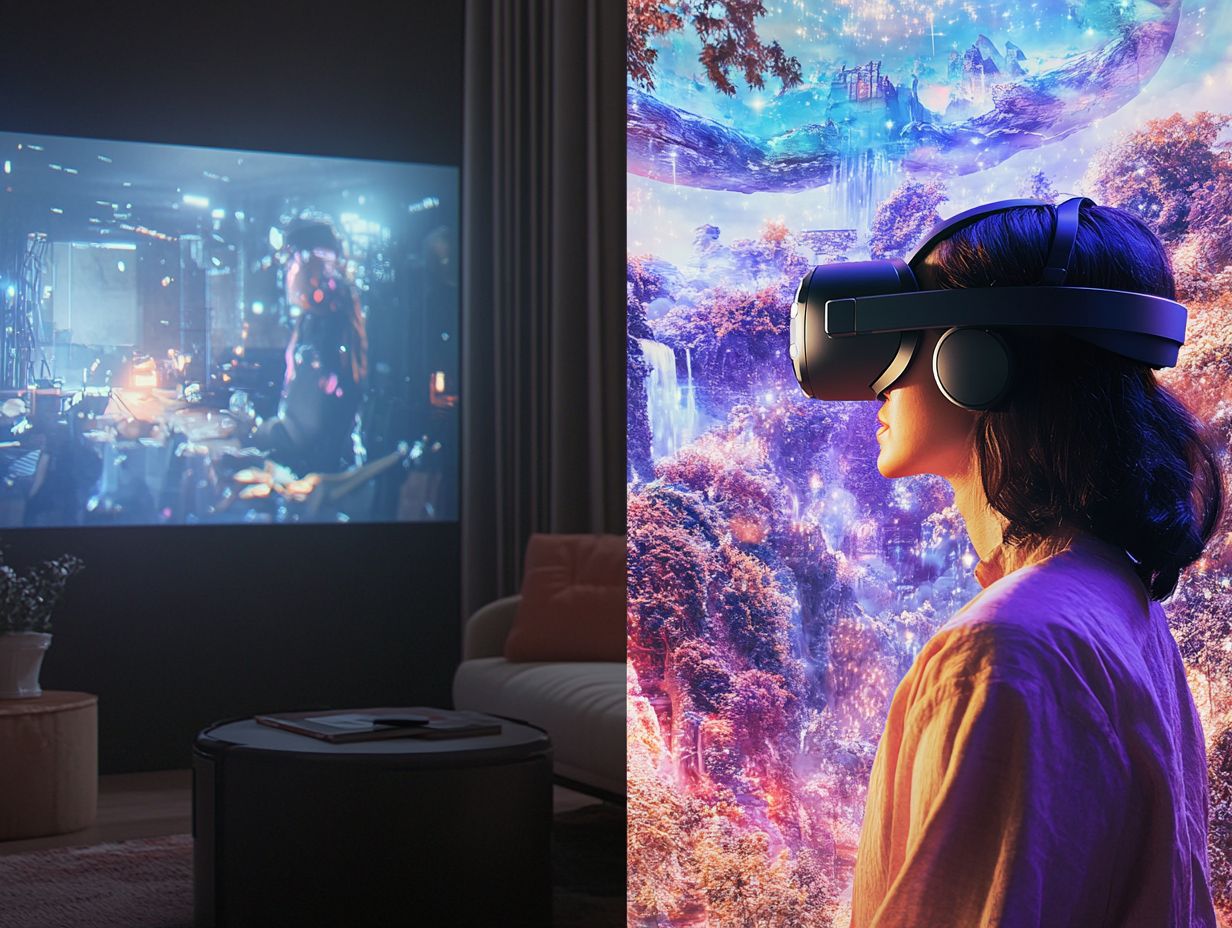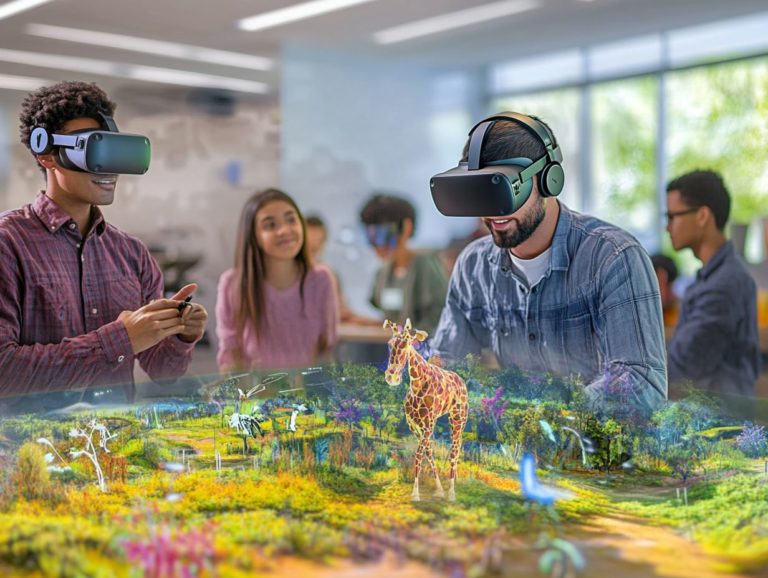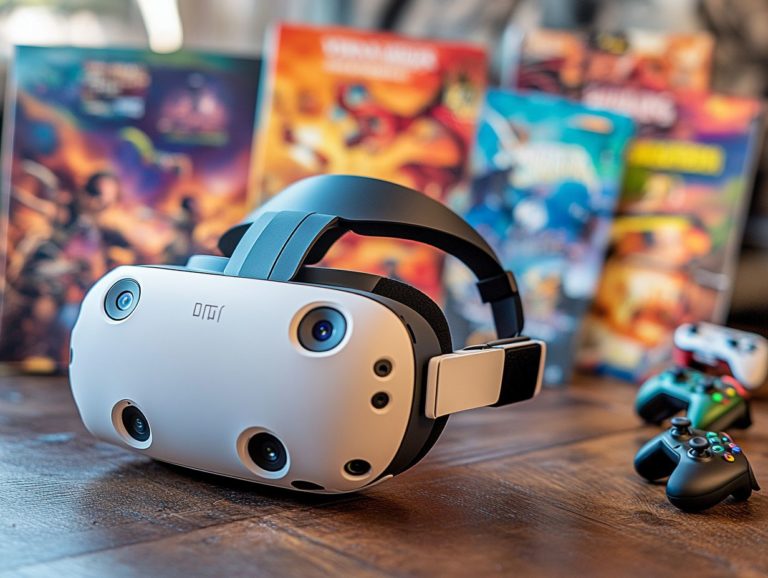exploring augmented reality vs. vr
In the rapidly evolving world of technology, augmented reality (AR) and virtual reality (VR) are making significant waves across various industries.
From enhancing gaming experiences to revolutionizing training methods, these immersive technologies are transforming the way users interact with both digital and physical environments.
This article delves into the definitions, applications, and comparisons of AR and VR, highlighting their unique benefits and limitations.
By understanding these aspects, users will be better equipped to choose the right technology for their needs and gain insights into what the future might hold for AR and VR innovations.
Contents
- Key Takeaways:
- Uses and Applications of AR and VR
- Comparing AR and VR Technologies
- Benefits and Limitations of AR and VR
- Choosing Between AR and VR
- Future of AR and VR
- Frequently Asked Questions
- 1) What is the difference between augmented reality (AR) and virtual reality (VR)?
- 2) How do AR and VR impact user experience?
- 3) Which technology is better for exploring new places and environments?
- 4) Can AR and VR be used for education and training purposes?
- 5) What are the major industries where AR and VR are being explored?
- 6) Are there any limitations to using AR and VR technologies?
Key Takeaways:
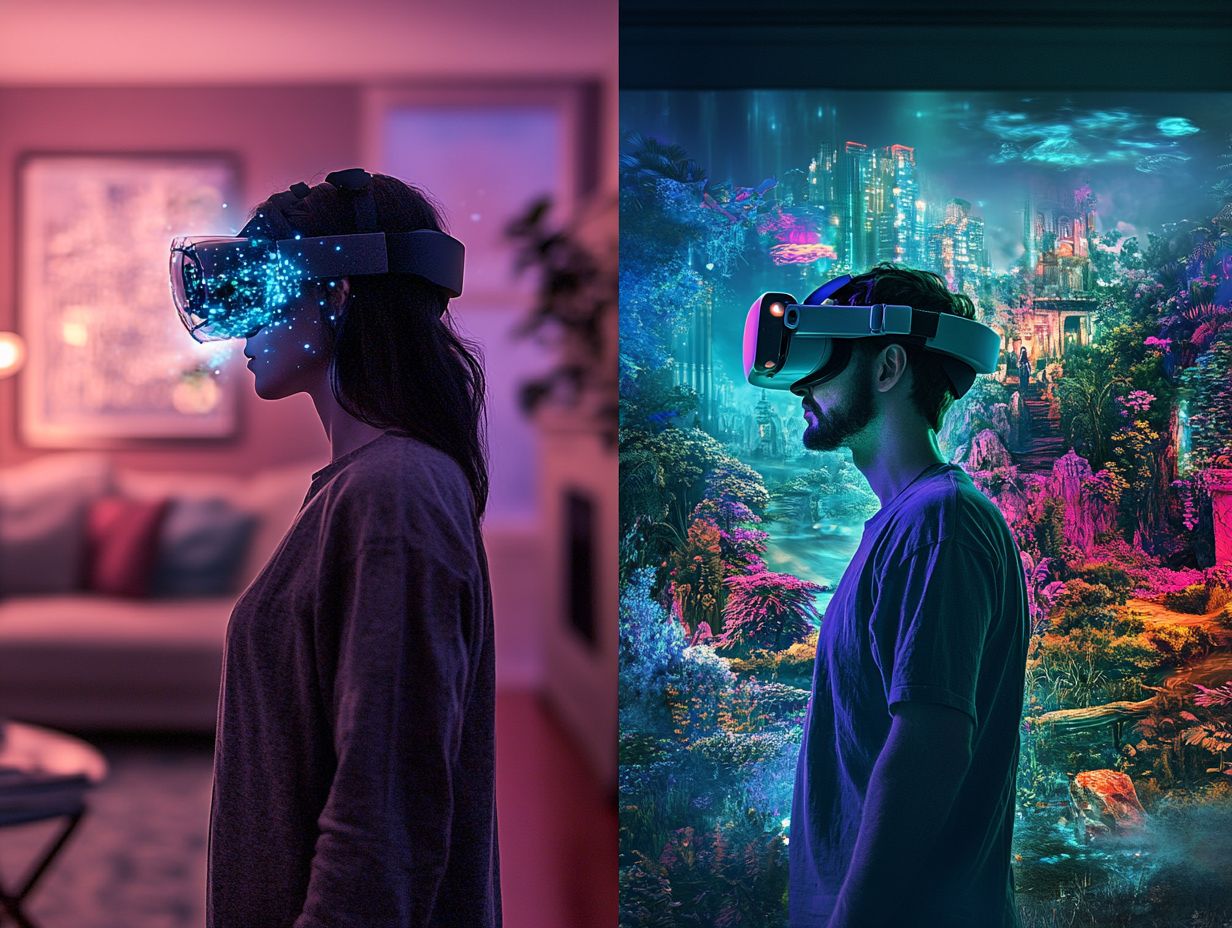
- AR and VR are both emerging technologies that offer unique and exciting experiences.
- AR is more commonly used in industries like education and retail, while VR is often used in gaming and entertainment.
- When choosing between AR and VR, it’s important to consider factors like budget, user experience, and intended application.
Dive into the world of AR and VR today and find out which technology suits your needs best!
Defining AR and VR
Augmented Reality (AR) and Virtual Reality (VR) are game-changing technologies that redefine user interaction with digital content. They create immersive experiences that blend virtual elements with the real world.
This enhances user interaction. It spans various fields like entertainment, education, and gaming.
While AR allows users to overlay digital images and real-time information onto their surroundings, VR transports users into entirely virtual environments through advanced headsets like Oculus Rift and PlayStation VR. This creates a sensory experience that s truly unparalleled.
The difference in user experience is crucial. For instance, AR applications like Pok mon Go invite users to explore their environment while capturing virtual creatures. This promotes social interaction and encourages physical activity.
On the other hand, VR is making waves in sectors like healthcare, where applications simulate lifelike scenarios, providing a safe space for medical professionals to hone their skills and practice complex procedures.
Both technologies use advanced sensors, cameras, and graphics engines, yet their unique offerings carve out distinct pathways for engagement and understanding in our increasingly digital landscape.
Uses and Applications of AR and VR
The uses and applications of Augmented Reality (AR) and Virtual Reality (VR) extend across a multitude of industries, presenting innovative solutions that elevate user experiences.
Discover immersive training simulations that change how you learn! Engage with captivating gaming applications that transport users to new worlds, and utilize interactive educational tools that enrich understanding.
These technologies are changing retail. They craft unique consumer experiences that redefine how users shop and interact with brands.
Industries and Fields Utilizing AR and VR
Industries like gaming, healthcare, education, and retail are leading the charge in harnessing Augmented Reality (AR) and Virtual Reality (VR). They fundamentally transform traditional practices and elevate user engagement through these immersive technologies.
In the gaming realm, immersive experiences whisk users away to fantastical worlds, while healthcare professionals reap the benefits of VR training simulations, allowing them to practice surgeries and emergency scenarios without any risk.
Meanwhile, in education, AR creates interactive learning environments, enriching the experience by overlaying real-time information onto physical objects. Retailers are quickly adopting AR applications for virtual try-ons. This lets users visualize products before buying, enhancing their shopping experience.
This significantly enhances the shopping experience and drives sales.
Comparing AR and VR Technologies
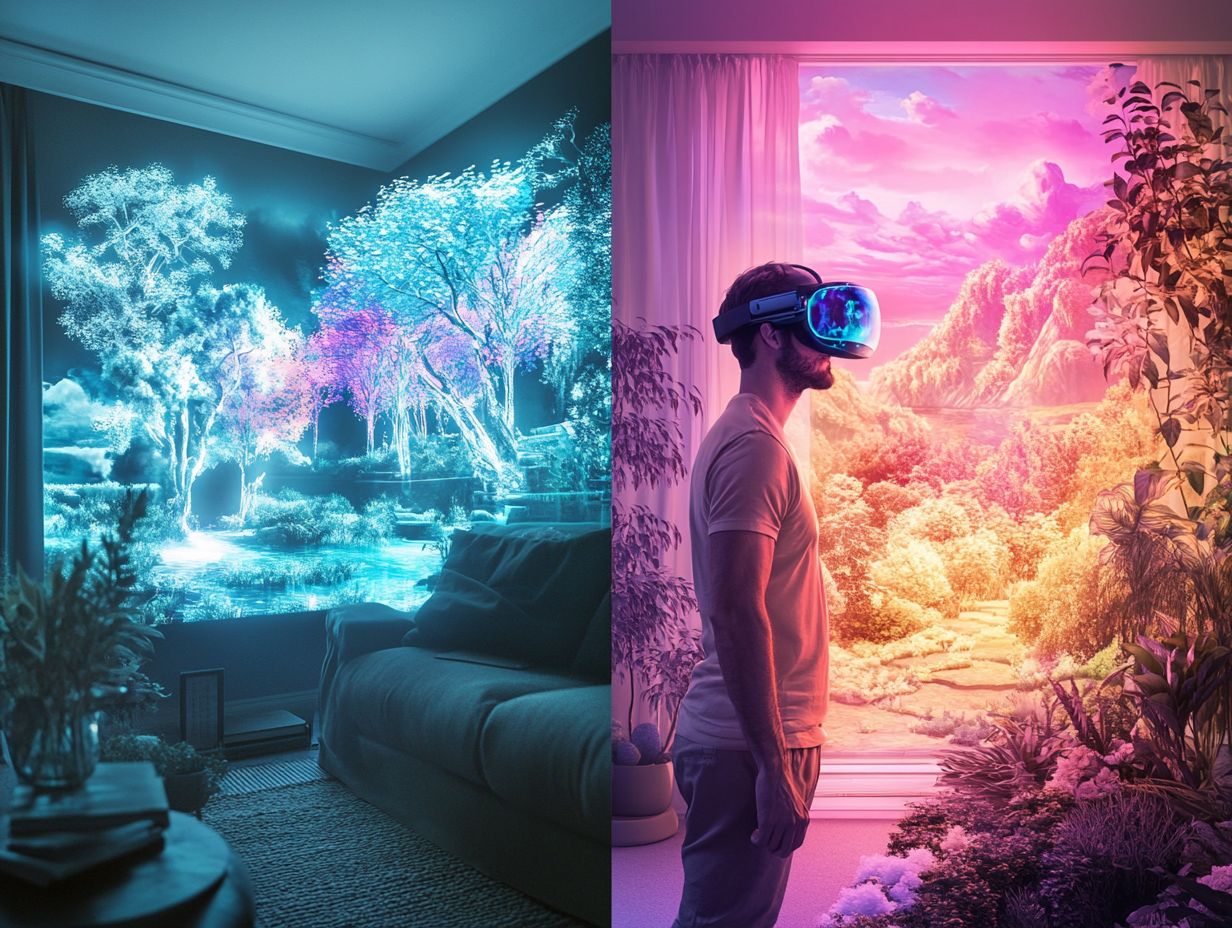
When you compare Augmented Reality (AR) and Virtual Reality (VR) technologies, you’ll discover distinct differences and similarities. These significantly shape the user experience.
AR enhances your physical surroundings with digital overlays, seamlessly blending the virtual with the real. In contrast, VR immerses you completely in computer-generated environments, transporting you to entirely new worlds.
Each technology offers unique avenues for engaging with digital content, enriching your interaction in diverse and compelling ways.
Key Similarities and Differences
Key similarities between Augmented Reality (AR) and Virtual Reality (VR) revolve around their reliance on cutting-edge technology to deliver immersive experiences. The primary distinction is how each technology changes how you see reality: AR enhances your surroundings with digital content, while VR transports you to an entirely new environment.
This difference shapes how you interact with each medium. In AR, you engage with both the physical and digital worlds at once, allowing for dynamic applications like navigation or interactive gaming that overlay information onto your real-world surroundings.
On the other hand, VR surrounds you with entirely made-up spaces, making it perfect for training simulations or virtual travel adventures.
Both AR and VR find applications across entertainment, education, and healthcare. Ultimately, your choice hinges on the level of immersion you seek and the specific outcomes you anticipate.
Benefits and Limitations of AR and VR
The benefits and limitations of Augmented Reality (AR) and Virtual Reality (VR) reveal critical insights into their applications. While these sophisticated technologies promise transformative experiences, they also encounter significant challenges, including high costs, technological hurdles, and the need for user adaptation.
Grasping these dynamics empowers you to navigate the AR and VR landscape effectively!
Advantages and Disadvantages of Each Technology
The advantages of Augmented Reality (AR) are compelling; it effortlessly merges digital content with the physical world, enhancing your interaction without making you feel isolated. In contrast, Virtual Reality (VR) offers a level of immersion that transports you into entirely new realms.
Both technologies have their drawbacks. AR fosters engagement by allowing you to interact with your surroundings, making it especially valuable in education and gaming. VR often requires a more isolated setup, which can limit your social interactions.
Accessibility is another consideration; while AR applications can run on a range of mobile devices, VR typically necessitates specialized hardware, creating a hurdle for some users.
Moreover, developing these applications can be both time-consuming and expensive. VR, in particular, demands intricate programming and design to deliver a captivating experience, presenting developers with the challenge of balancing quality with budget constraints.
Choosing Between AR and VR
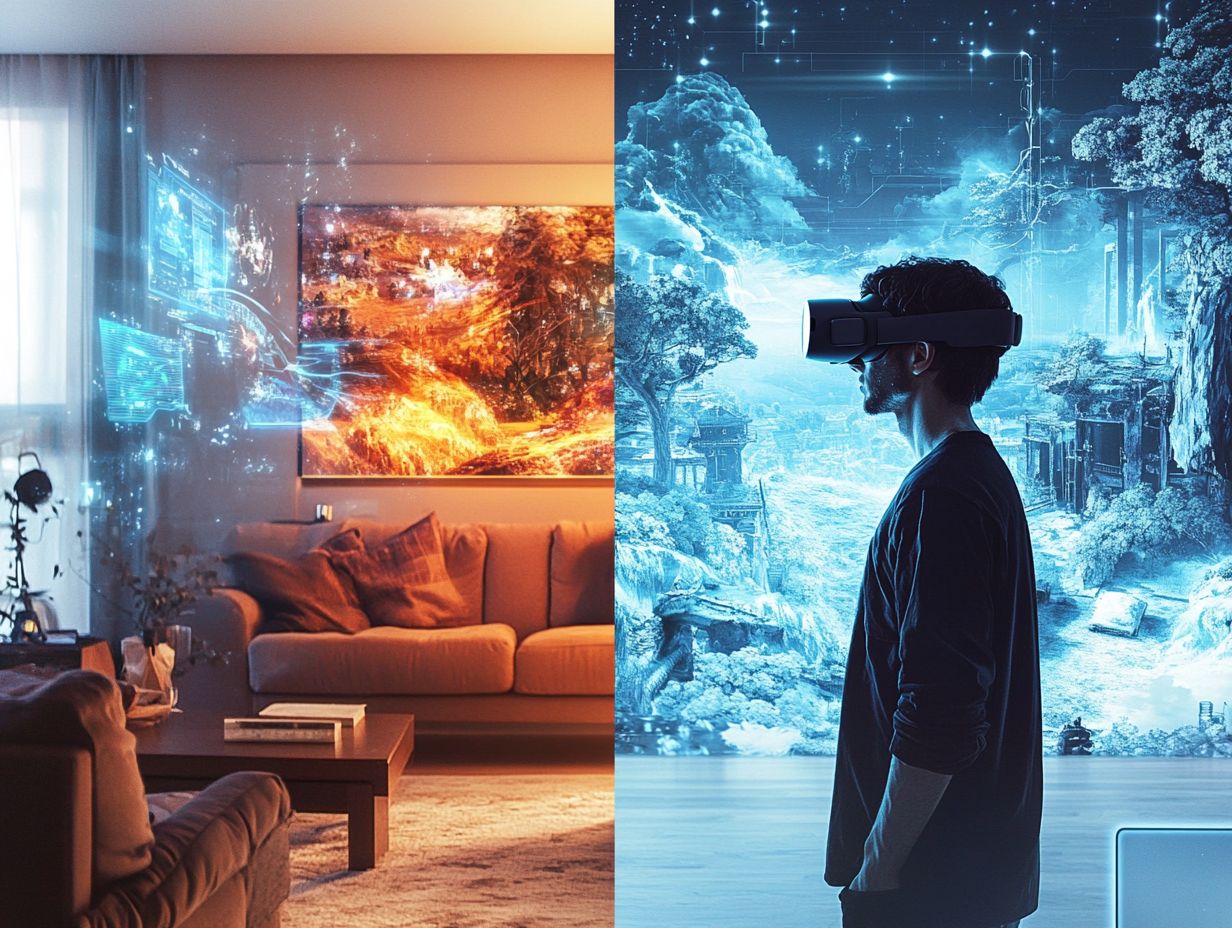
Choosing between Augmented Reality (AR) and Virtual Reality (VR) is exciting! Think about your project s needs and what experience you want to create.
Each technology brings its own distinct functionalities and experiences, tailored to various user interactions and engagement levels.
By considering these factors, you can make an informed decision that aligns perfectly with your objectives.
Ready to dive into the world of AR and VR? Start exploring today and discover the possibilities!
Factors to Consider
When deciding between Augmented Reality (AR), which adds digital information to the real world, and Virtual Reality (VR), which creates a completely immersive experience in a virtual environment, consider user experience and industry applications. Also, think about the technological requirements of your project to ensure it resonates with your target audience.
Cost plays a significant role. AR typically requires less expensive hardware than VR, making it more accessible to a wider range of users.
User engagement is equally important. AR enhances real-world interactions, attracting a broader audience, while VR demands full immersion, often appealing more to niche groups like gamers or professionals in training.
It s essential that the technological capabilities of each option align with your goals. If your aim is to overlay digital information onto the physical world, AR is your best bet. On the other hand, VR shines in scenarios that necessitate complete immersion, such as simulations in fields like medicine or aviation.
Future of AR and VR
The future of AR and VR is exciting! Get ready for groundbreaking advancements that could change how we live and interact.
Predictions indicate that technological advancements will greatly enhance the immersive experiences offered by these platforms, making them not only more accessible but also seamlessly integrated into your daily life.
Across a multitude of sectors including gaming, healthcare, and education you can expect AR and VR to redefine how you interact with the digital world.
Predictions and Potential Developments
Predictions for the future of AR and VR indicate that you can expect rapid advancements in both technologies. Developments in immersive technology are set to expand applications and significantly enhance user experiences.
In particular, the integration of artificial intelligence and machine learning could transform the way you engage with these platforms, allowing for personalized experiences and heightened interactivity. For instance, in the gaming sector, adaptive narratives could enable your choices to shape storylines, crafting uniquely tailored experiences just for you.
Industries like education and healthcare are poised to take full advantage of these innovations. They will use AR for interactive learning modules and VR for medical training, ultimately fostering deeper understanding and skill acquisition.
As these technologies evolve, your interactions are likely to become more intuitive and seamless, making everyday tasks from virtual meetings to online shopping feel increasingly lifelike and engaging.
Frequently Asked Questions
1) What is the difference between augmented reality (AR) and virtual reality (VR)?
AR overlays digital information onto the real world, while VR completely immerses the user in a simulated environment.
2) How do AR and VR impact user experience?
AR enhances the user’s perception of the real world by adding digital elements. VR, on the other hand, transports the user to a completely different world, creating a more immersive experience.
3) Which technology is better for exploring new places and environments?
It depends on the purpose of exploration. AR can provide information and enhance the experience of being in a real-world location, while VR can fully immerse the user in a simulated environment, allowing for a more detailed exploration.
4) Can AR and VR be used for education and training purposes?
Yes, both AR and VR can be used for education and training. AR provides interactive learning experiences, while VR simulates real-life scenarios for training purposes.
5) What are the major industries where AR and VR are being explored?
AR and VR are being explored in industries such as gaming, entertainment, education, healthcare, retail, and architecture, among others.
6) Are there any limitations to using AR and VR technologies?
Both AR and VR have their limitations. AR requires a device with a camera to function, and VR may cause motion sickness in some users. Both technologies can also be expensive and may require specialized training to create content.
Have more questions? Dive deeper into AR and VR technologies today!

